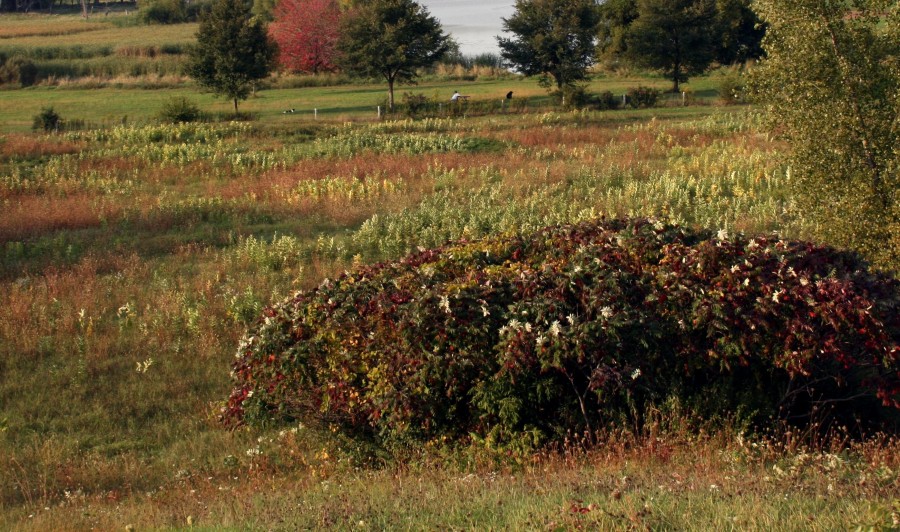The Madison Parks Department has stopped mowing in the meadow adjacent to the Warner Park dog park, below sled hill. At the request of Wild Warner, the department will allow a meadow to bloom, as it did historically, as shown in this photo from 2008:

Note the milkweed, a key food and nursery for Monarch butterflies. Based on our experience with the “upper” meadow, unmowed for two years, an entire column of life will bloom in the meadow.
Instead of a grass “desert,” we will see plants, bugs, butterflies, birds and their nests, moles, rabbits, hawks, owls, people — and maybe even our foxes — enjoying the rich diversity of a meadow. Wild Warner members have offered to help manage the meadow, in part by restoring native Wisconsin prairie plants.
The meadow was restored after discussions with the Madison Fire Department, Rhythms and Booms, police and parks personnel to ensure that the meadow would not create a fire hazard. Walking lanes will be cut through the meadow, and the sled/viewing hill will continue to be mowed.
Park officials have also agreed to stop mowing under the 250-year-old Bur Oak near the dog park bridge and a 200-year-old Red Oak near the picnic shelter southeast of the bridge. They agreed that these historic trees, alive when Native Americans camped in Warner Park, will best survive if the soil over their roots is mulched and not compacted by heavy mowing machines.
We ask all dog owners to keep their dogs on leashes while enjoying the wildlife in the meadow. Dogs will chase smaller animals, reducing their fat stores and chances for survival.
We thank operations manager Charlie Romines, East Side Supervisor Craig Klinke, superintendent Kevin Briski, and conservation officer Russ Hefty for their support.
You must be logged in to post a comment.